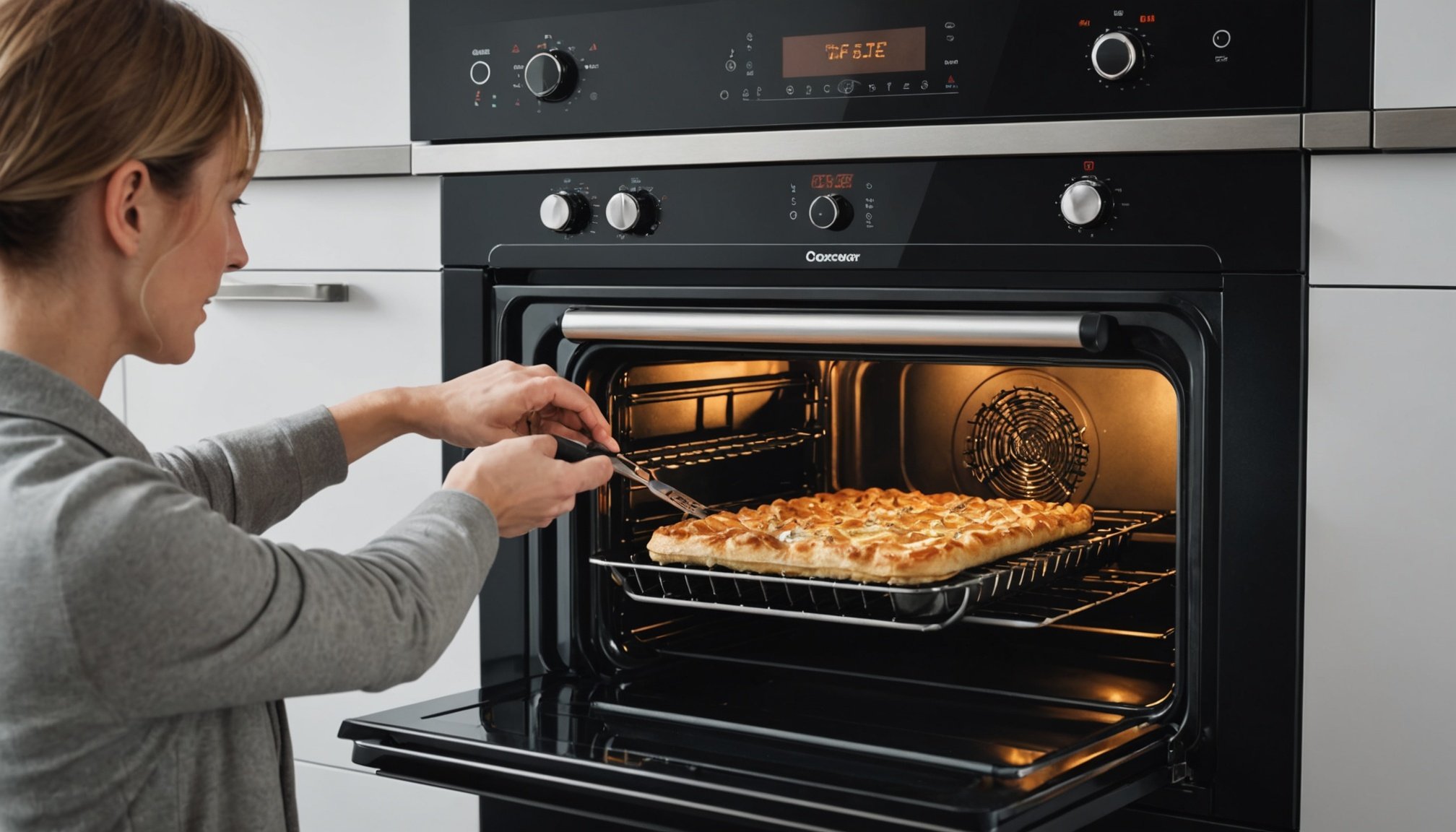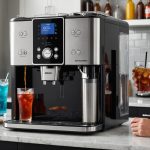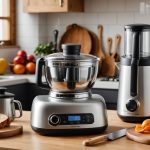Overview of Self-Cleaning Ovens
Understanding self-cleaning ovens begins with recognizing their ingenious design and practical function in modern kitchens. These appliances incorporate advanced oven technology to significantly ease the cleaning process, making kitchen maintenance less of a chore.
Definition and Concept
Self-cleaning ovens are engineered to leverage high temperatures or steam to burn off and dislodge residual food particles, effectively cleaning themselves with minimal manual intervention. The convenience of this technology cannot be overstated, as it eliminates the need for harsh chemicals and arduous scrubbing, which are common with traditional ovens.
In the same genre : Crafting the Perfect UK Kitchen: Top Tips for Effortless Entertaining and Vibrant Gatherings
Benefits of Self-Cleaning Ovens
- Time-saving: These ovens drastically cut down the time spent on cleaning, allowing you to focus on cooking and enjoying meals.
- Chemical-free cleaning: The use of heat and steam ensures a safer cleaning process without harmful residues.
- Enhanced durability: By keeping the oven cleaner, the appliance often enjoys a longer lifespan.
Common Technologies
Two prevalent oven technology approaches include pyrolytic cleaning, which incinerates residues at high temperatures, and catalytic liners, which absorb grease during regular baking. This variety in technology provides options to suit different user preferences and needs, enhancing the appeal of self-cleaning ovens as a beneficial kitchen upgrade.
Top Self-Cleaning Ovens in the UK
For those seeking the best self-cleaning ovens in the UK, this guide highlights top models that combine efficiency with advanced features. Several UK models stand out due to their innovative design and user-friendly functionalities.
Have you seen this : Unlock Massive Savings: The Definitive Guide to Scoring Top UK Kitchen Gadgets During Seasonal Sales
Bosch Series 4 HBS573BS0B is a notable choice, praised for its robust pyrolytic cleaning. This model has received high ratings for its ease of use and effectiveness in keeping the oven spotless after use.
Next, consider the Neff B57VR22N0B. It’s known for its integrated VarioSteam technology, which adds steam for enhanced roasting and baking experiences. Users appreciate how it evenly cleans, leaving no residue, making it a top pick when considering the oven technology.
The Samsung NV75N5641RS is a dual-cooking marvel. Its flexibility allows different settings, including steam cleaning, offering convenience for varied cooking needs. Customers often highlight its advanced features and energy-efficient cleaning cycle.
In user feedback, individuals have commended these brands for their reliability and innovative cleaning technologies. The top picks consistently deliver excellent performance, proving why they are highly recommended across consumer reviews. Whether prioritizing specific features or overall value, these models promise to enhance any modern kitchen in the UK.
In-Depth Analysis of Cleaning Technologies
When it comes to understanding the various cleaning technologies in self-cleaning ovens, two dominant methods stand out: pyrolytic cleaning and steam cleaning.
Pyrolytic Cleaning Technology
Pyrolytic cleaning is a highly effective method that uses extreme heat to incinerate food residues. The oven heats up to temperatures around 500°C, turning grime into ash, which can be easily wiped away. This method is lauded for its thoroughness in cleaning, leaving the oven virtually spotless. Users appreciate its efficiency and the reduction of scrubbing required, but it can be energy-intensive.
Steam Cleaning Technology and Its Effectiveness
In contrast, steam cleaning is a gentler option, employing water vapor at lower temperatures to soften and easily remove debris. It is less energy-consuming compared to pyrolytic options and provides a quick cleaning solution without waiting for the oven to cool down. However, it might not tackle heavy baked-on residues as effectively.
Comparison of Traditional Versus Modern Cleaning Methods
Traditional cleaning methods require manual effort with chemical agents, often proving laborious and time-consuming. Modern technologies such as pyrolytic and steam cleaning offer convenience and efficiency. They ensure cleanliness with minimal intervention, making them desirable for contemporary kitchens.
Pros and Cons of Self-Cleaning Ovens
Self-cleaning ovens encompass a range of advantages and disadvantages that affect user choice and satisfaction. Exploring these points provides clarity on their practical implications.
Advantages
- Convenience is a major benefit, greatly reducing the need for manual cleaning. These ovens allow users to enjoy more free time, eliminating the labor-intensive chores associated with traditional ovens.
- Chemical-free cleaning is another advantage. By utilising heat or steam, these ovens provide a safer method of maintaining a clean kitchen environment, avoiding harsh chemicals.
Disadvantages
While the technology offers numerous benefits, there are potential drawbacks to consider. Some users express concern over energy consumption, as certain cleaning technologies, like pyrolytic cleaning, require high temperatures and extended cycles. These processes can lead to increased electricity usage, impacting energy bills.
Despite these considerations, many users find the trade-offs acceptable given the self-cleaning convenience. Understanding these factors helps potential buyers make informed decisions about incorporating self-cleaning ovens into their kitchens, weighing the practical and financial impacts while appreciating the time savings and improved hygiene.
User Reviews and Experiences
Exploring user reviews offers valuable insights into the real-world performance and satisfaction with self-cleaning ovens. Customers often highlight the convenience brought by these oven technologies, with many appreciating the time saved due to reduced manual cleaning efforts.
A common theme in customer feedback is the effectiveness of self-cleaning features in maintaining hygiene. Users frequently commend pyrolytic cleaning for its thoroughness, albeit noting its higher energy usage. Conversely, steam cleaning garners praise for its quick and energy-efficient cycles, though it may not match pyrolytic methods in tackling stubborn residues.
User experiences with models like Bosch’s Series 4 and Samsung’s NV75N5641RS are often positive, citing features like dual cooking flexibility and the ease of using advanced cleaning functions. A testimonial summary reveals that while many prioritize performance, energy consumption remains a concern for some.
Notably, common themes in satisfaction include reliability and longevity, echoing the desire for durable appliances. Users also note the enhanced cooking experience these ovens provide, encouraging potential buyers to weigh the benefits of specific features against their needs. Overall, these testimonials paint a comprehensive picture of the advantages and considerations in adopting self-cleaning ovens.
Buying Guide for Self-Cleaning Ovens
Purchasing a self-cleaning oven requires an understanding of several key factors to ensure you make an informed decision. Begin by assessing the selection criteria—consider the size, oven technology, and cleaning methods like pyrolytic or steam cleaning. Each offers unique benefits: pyrolytic cleaning is thorough, while steam is more energy efficient.
When choosing, also examine features and specifications that align with your cooking needs. Features such as programmable settings, energy efficiency ratings, and additional functionalities like convection cooking can enhance convenience and efficiency in your kitchen.
Budget is a critical consideration. For your budget considerations, aim to balance desired features with price. High-end models often boast advanced oven technology but may come with a higher price tag. Establish your budget to ensure you find an option that suits your financial capability while still meeting your requirements.
Considerations around UK models are crucial, especially if you aim to invest in reputable brands known for reliability and performance. Horizons may include exploring models praised in user reviews to gain insight into real-world experiences. Keep warranty and support services in mind as they can contribute significantly to the long-term satisfaction with your self-cleaning oven purchase.
Pricing Information and Market Comparison
Navigating the world of self-cleaning ovens can be a financial maze. Luckily, understanding the pricing landscape helps you make informed decisions. In the UK, these appliances vary significantly in price, ranging from affordable models to high-end options. Budget considerations play a crucial role here, as the costs often hinge on the level of advanced oven technology and additional features included.
When conducting a market comparison, it’s essential to gauge these price differences. Brands like Bosch, Neff, and Samsung offer UK models that span various pricing tiers. High-end models, often equipped with cutting-edge features like pyrolytic or steam cleaning, cater to those seeking premium quality and performance. Conversely, budget options still provide essential benefits without the hefty price tag, ensuring you don’t have to sacrifice functionality for affordability.
Interestingly, there are budget-friendly models that maintain a fine balance between cost and quality. They typically include user-friendly functionalities and reliable performance, making them appealing choices for those mindful of expenses. Exploring these options and aligning them with your budget considerations can lead to a satisfactory purchase without compromising on quality or essential features.






